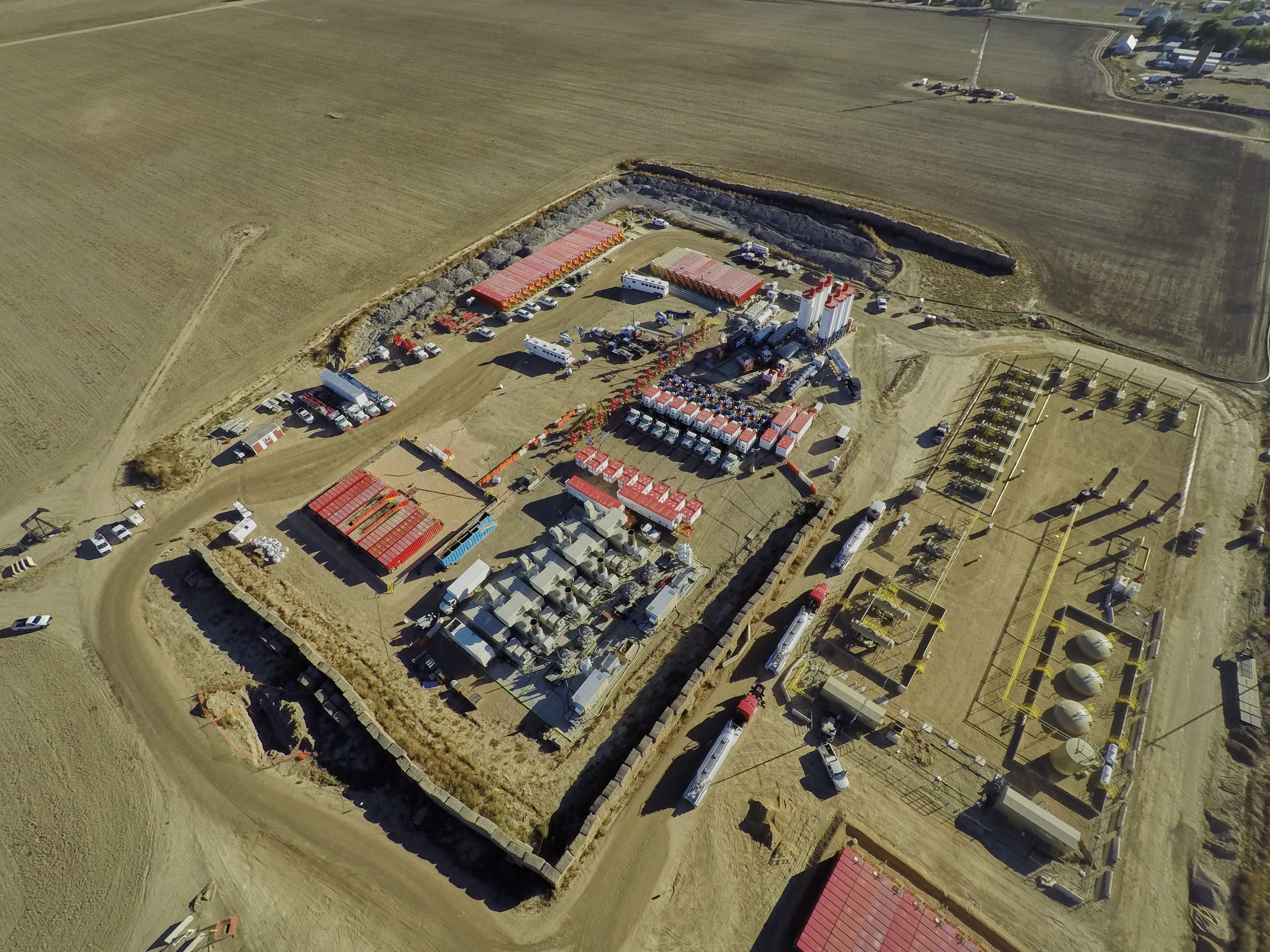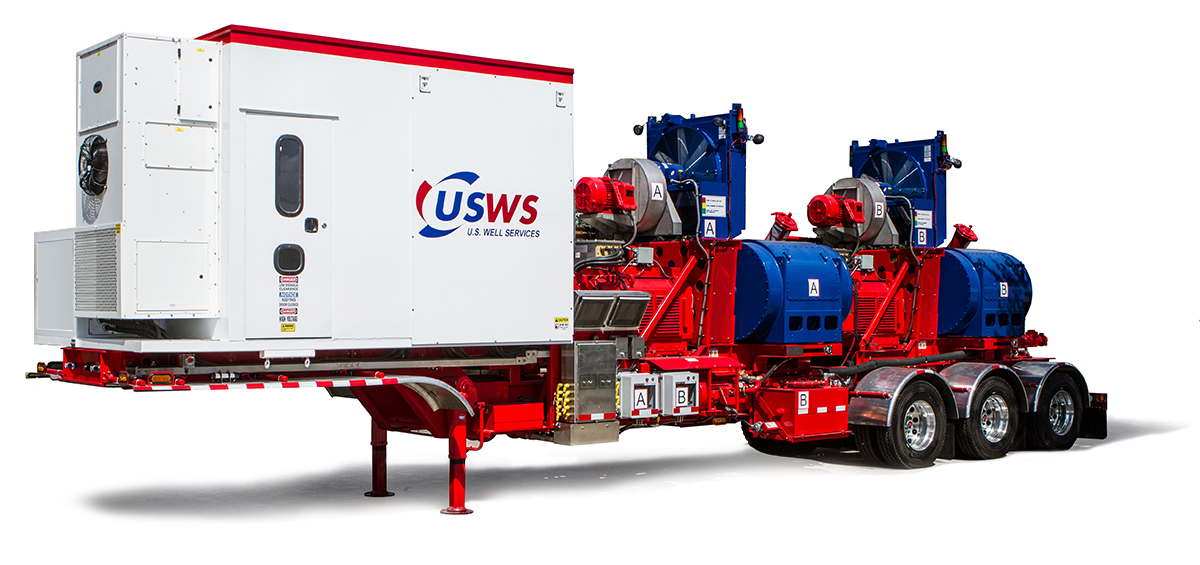Throughout the U.S. many operators are facing significant environmental regulatory pressures such as emissions, noise and silica dust. State and federal agencies are getting stricter with nonattainment areas and are tightening emission regulations for nitrogen oxides (NOX), carbon monoxide, methane and other emissions.
Noise pollution is likewise being more tightly regulated in multiple basins, specifically how both high- and low-frequency noise affects residential communities as well as wildlife. Permissible exposure limits (PELs) for silica dust from proppant are being tightened over concerns about silicosis.
In this low-price commodity environment improvements to address these issues must be made while simultaneously looking to reduce overall costs and improve efficiencies. New technologies such as Clean Fleet with Whisper—the first fully electric, fully mobile electric-powered hydraulic fracturing fleet fueled 100% by field natural gas—delivers cost savings and addresses these
environmental regulatory pressures.

Electric-powered fracturing
Traditional hydraulic fracturing fleets are powered by more than 20 large diesel engines up to 2,500 brake horsepower (bhp) each. By removing all diesel engines from a pressure pumping site and replacing them with mobile turbine engine generator units, a fleet can be run completely on electric power. This technology was first deployed in 2014 in the Marcellus Shale in West Virginia and has since also been deployed in Colorado. There are currently two active electric-powered fleets in North America.
The electric fleets are completely fueled by field natural gas that is supplied from a pipeline. If needed, CNG or LNG also can be used as a fuel when field natural gas is not available. Two large electric compressors boost the natural gas pressure to a constant 300 psi as required by the turbine engine generators. Combined, the compressors provide up to 84,950 cu. m/d to 113,267 cu. m/d (3 MMcf/d to 4 MMcf/d) for the mobile turbines.
The electric fleets can run with the power from three or four turbines depending on the hydraulic horsepower (hhp) requirements to stimulate the well. Each one produces 5.67 MW of three-phase power at 13,800 v for a total of 17.01 MW to 22.68 MW electricity output at the International Organization for Standardization conditions. The power generated by the turbines then runs through a set of switchgear trailers. These trailers distribute the electricity, provide circuit breakers and establish safeties in the equipment such as ground fault detection. The power then leaves the switchgear and is stepped down to 600 v using multiple transformers. Each transformer is a dry cast coil type rated for 3,500 kilovolt-ampere.
At this point the electric fleets are similar to a conventional hydraulic fracturing fleet except that all the fleet’s diesel engines and transmissions are replaced by electric motors and variable frequency drives (VFDs). Each electric fleet has eight dual hydraulic fracturing pump trailers that all run on 600-v power. Each dual pump trailer is rated at 3,500 hhp for a total of 28,000 hhp per fleet. The dual pump hydraulic fracturing units have two independent triplex pumps.
On a traditional diesel-powered unit, a large radiator typically sits on the gooseneck. On the electric pump units the large radiator is removed, and in its place sits a VFD house with two independent VFDs. In addition to the electric pumps, blenders, hydration, data van, sand equipment and a silica dust suppression vacuum are all also completely electric powered.

Emission reduction
One of the most notable environmental benefits of the electric-powered fleet is reducing emissions to near-zero levels. Excess NOX can lead to acid rain and contribute to unhealthy ground-level ozone and smog. The reduction is primarily achieved by eliminating the conventional diesel engines and using natural gas as a fuel. The emissions on the turbines were measured in the exhaust ports by a third party, and the NOX levels were found to be less than 0.036 g/kWh. This is a dramatic reduction when compared to Environmental Protection Agency requirements for off-highway diesel engines.
Natural gas is a cleaner fuel than diesel, and it produces fewer potential pollutants. Natural gas turbine engines also allow a continuously burning combustion chamber that results in a more complete burn, which greatly reduces emissions when compared to a diesel engine’s four-stroke cycle. The gas turbines have a significant advantage because they use lean premixed combustion technology to ensure a more uniform air and fuel mixture and to prevent the formation of regulated pollutants. Up to 60% of the airflow on the turbine engine is allowed to be premixed with the fuel, resulting in a much more consistent air and fuel mixture.
Noise reduction
The Colorado Oil & Gas Conservation Commission has set strict noise regulations for both high-frequency and low-frequency noise. About one-third of all complaints received in 2015 in Colorado were related to noise. One of the electric fleets operating
in the Wattenberg Field in Colorado was measured to be 7 decibel A (dBA, A-weighting describes audible, higher frequency noises) and 12 dBC (C-weighting describes low-frequency vibration noises that can shake windows) quieter than a comparable diesel fleet. This correlates to an 80% reduction in sound intensity on the dBA scale and a 95% reduction on the dBC scale.
Silica dust reduction
Both of the electric hydraulic fracturing fleets have electric-powered dust control to reduce silica dust significantly below PEL requirements. Like the rest of the stimulation equipment, the dust vacuum system is powered by 600-v electricity. This engineered system reduces measured silica amounts up to 80% below PEL requirements. To increase safety, engineering controls like this are more effective at controlling hazards rather than merely using administrative controls or personal protective equipment.
Cost reduction, increased efficiencies
Fueling the turbines with field natural gas reduces fuel costs by up to 90%. The turbines consumed an average of 3,030 cu. m (107 Mcf) of natural gas per hour while powering more than 10,000 hhp of fracturing equipment during stimulation. An equivalent diesel hydraulic fracturing fleet can consume about 1,000 gal of diesel fuel in 1 hr of pumping. These dramatic fuel savings come from both the reduced commodity price of unfiltered field natural gas over diesel fuel as well as not having trucking costs for the natural gas.
The electric motors used by the electric fleets have their first maintenance period at 30,000 hours and an expected life of up to 20 years. The first electric fleet also went from pad to pad for more than one year without needing to go back to the shop for repairs and maintenance, allowing increased pumping time and decreased nonproductive time. Diesel fleets will need to go back to the yard every other month for repairs and maintenance such as oil and filter changes that the electric fleets do not have to do. The longer life, reduced maintenance schedule and increased pumping time are an important economical advantage.
Recommended Reading
E&P Highlights: Dec. 16, 2024
2024-12-16 - Here’s a roundup of the latest E&P headlines, including a pair of contracts awarded offshore Brazil, development progress in the Tishomingo Field in Oklahoma and a partnership that will deploy advanced electric simul-frac fleets across the Permian Basin.
E&P Highlights: Dec. 30, 2024
2024-12-30 - Here’s a roundup of the latest E&P headlines, including a substantial decline in methane emissions from the Permian Basin and progress toward a final investment decision on Energy Transfer’s Lake Charles LNG project.
Nabors, ProPetro Plan to Deliver High Voltage to Drillers
2024-12-10 - Nabors Industries, in partnership with e2Companies, and, separately, ProPetro Holding Corp., both launched oilfield electrification solutions on Dec. 10.
E&P Highlights: Jan. 21, 2025
2025-01-21 - Here’s a roundup of the latest E&P headlines, with Flowserve getting a contract from ADNOC and a couple of offshore oil and gas discoveries.
E&P Highlights: Jan. 13, 2025
2025-01-13 - Here’s a roundup of the latest E&P headlines, including Chevron starting production from a platform in the Gulf of Mexico and several new products for pipelines.
Comments
Add new comment
This conversation is moderated according to Hart Energy community rules. Please read the rules before joining the discussion. If you’re experiencing any technical problems, please contact our customer care team.




